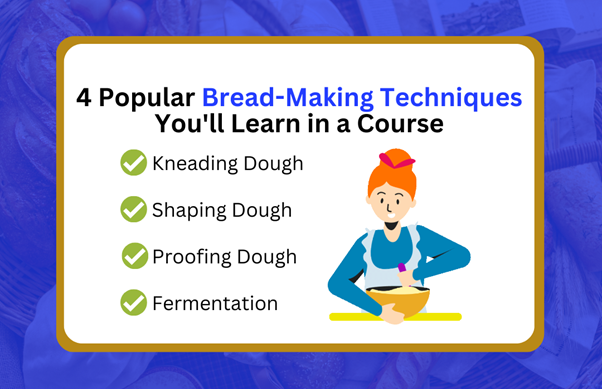Baking bread is a timeless art. It is timeless and has been passed down from generation to generation. Nevertheless, it is an artful skill that requires dedication to achieve perfection. For over the centuries, many have ventured to learn and master baking to produce fresh baked goods at their finest. Still, both novice and expert bakers alike can find enjoyment in baking. Hence, many people have decided to take bread-making classes in Singapore to hone their skills and learn the popular techniques used for creating delicious, homemade bread.
From kneading and shaping dough to proofing and baking, you’ll learn the fundamentals of bread-making that will open up a world of possibilities. Here are four popular bread-making techniques that you’ll learn in a course:
Kneading Dough
Kneading dough is a fundamental technique in bread-making that involves manipulating the dough with your hands to develop gluten, which gives bread its characteristic texture and structure. As you knead the dough, you’re working to distribute the yeast, break down starches, and align gluten strands. It allows the dough to become elastic and smooth, creating a structure that can trap air and carbon dioxide produced by the yeast, allowing the bread to rise.
Shaping Dough
Shaping dough is another important bread-making technique to learn when taking baking courses for beginners. Shaping the dough involves forming it into the desired shape, such as a boule, baguette, or loaf, before undergoing its final rise and baking. Shaping the dough is vital since it helps to create a uniform shape (which allows the bread to bake evenly). Second, shaping also helps to create surface tension in the dough, which is crucial for creating a nice crust. You can use it to incorporate fillings or create decorative patterns on the bread’s surface.
Proofing Dough
Proofing, also known as the final rise, enables the shaped dough to rest and rise before it is baked. During this time, the yeast in the dough ferments the sugars and produces carbon dioxide, which causes the dough to expand and rise. The process technique allows the dough to rise one last time, which helps to develop the bread’s final structure and texture. Additionally, it helps make the bread’s flavour by allowing the yeast to produce complex flavours and aromas.
Fermentation
It is the process of allowing the dough to rest and develop flavour before shaping and proofing. During fermentation, the dough is left to rest for an extended period, allowing the yeast and bacteria to work on the flour and produce organic acids that give the bread its characteristic flavour.
Are you interested in learning how to make your own delicious bread? Join our bread-making class in Singapore and discover the secrets of creating perfect loaves from scratch. Visit Bespoke Bread for more info.

